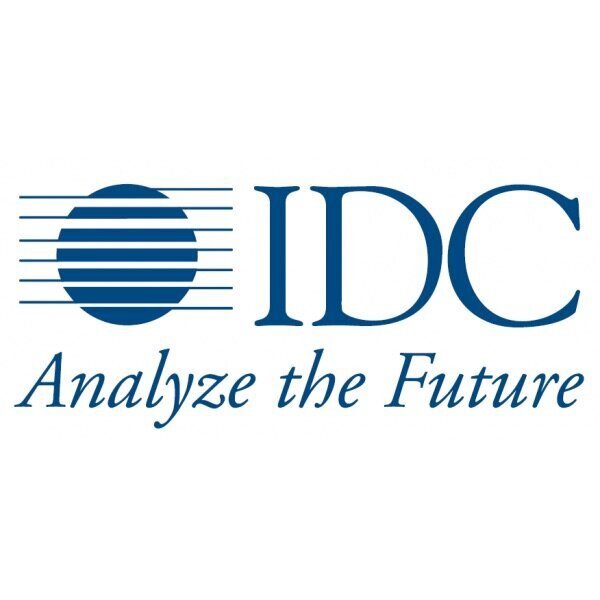CIOs and IT leaders must take action to accelerate time to value and drive top- and bottom-line enterprise growth from digital investments, according to Gartner, Inc.’s annual global survey of CIOs and technology executives. The survey gathered data from 2,203 CIO respondents in 81 countries and all major industries, representing approximately $15 trillion in revenue/public-sector budgets and $322 billion in IT spending.
Read MoreEmbedded finance, the integration of value-added financial services into software offerings, is set to redefine how consumers and businesses build and manage relationships with financial services, according to new research and analysis from Bain & Company and Bain Capital.
Read MoreNew research unveiled at Forrester’s (Nasdaq: FORR) Technology & Innovation North America reveals that global tech spending will reach more than $4.8 trillion in 2023 as two-thirds of technology decision-makers increase their tech budgets, despite increasing economic uncertainty.
Read MoreWorldwide shipments of Augmented Reality (AR) headsets are forecast to decline 8.7% year over year to nearly 260,000 units by the end of 2022, according to new data from the International Data Corporation (IDC) Worldwide Quarterly Augmented and Virtual Reality Headset Tracker.
Read MoreBerg Insight, the world’s leading IoT market research provider, today released new findings about the market for electric aircraft and eVTOLs (passenger vehicles that take off and land vertically). There are today many large-scale industrial projects in development with the purpose of developing aircraft and eVTOLs based on electric drivetrains.
Read MoreAs 5G’s commercial rollout continues, the deployment of distributed computing has become progressively more important. But in the 5G era, distributed computing has played a supportive role, while, as enterprises and service providers transition to 6G, distributed computing will be given a leading role.
Read MoreSecurity and risk management, application and integration strategies, and infrastructure and operations are the top three technology priorities for midsize enterprises (MSEs) in 2022, according to a recent Gartner, Inc. survey. “MSEs are shifting investments and even increasing budgets to fund their top technology priorities,” said Mike Cisek, VP Analyst at Gartner.
Read MoreWhile 84% of global executives believe responsible AI (RAI) should be on top management agendas, only 25% have comprehensive RAI programs in place, as shown in a joint study published today by MIT Sloan Management Review (MIT SMR) and Boston Consulting Group (BCG).
Read MoreForrester forecasts that working populations in the five largest economies in Asia Pacific — India, China, South Korea, Australia, and Japan — are more at risk due to physical robot automation than Europe and North America. By 2040, 63 million jobs are expected to be lost to automation, with more than 247 million jobs expected to be in jeopardy across industries that are more susceptible to automation, such as construction and agriculture.
Read MoreWorldwide revenues for the artificial intelligence (AI) market, including software, hardware, and services for both AI centric and AI non-centric applications*, totaled $383.3 billion in 2021, an increase of 20.7% over the prior year, according to the most recent International Data Corporation (IDC) Worldwide Semiannual Artificial Intelligence Tracker.
Read MoreAs TinyML vendors continue to democratize Machine Learning (ML) at a rapid pace, global technology intelligence firm ABI Research forecasts that TinyML Software-as-a-Service (SaaS) revenue will exceed US$220 million in 2022 and become an important component from 2025 onward.
Read MoreAs enterprises apply their best creative and strategic thinking to how to take advantage of the metaverse, they should also address the heightened risks the metaverse will pose to employees, customers and corporate assets, according to Everest Group.
Read MoreFew industry segments depend more on getting the most out of investments in big data analytics and data science than the property technology (PropTech) sector. However, when it comes to finding insights from hundreds of thousands -- if not millions (sometimes billions) -- of data points to drive desired business outcomes, PropTech leaders may be falling short of meeting expected performance objectives, according to a recent BTR-100 survey commissioned by CoreLogic.
Read MoreData science is revolutionizing value generation and customer journeys in the fintech and financial services sector. It has emerged as a critical differentiator that enables companies to meet critical business objectives and complete time-sensitive processes—such as credit risk scoring and property value assessments—more efficiently and affordably.
Read MoreA recent survey by Gartner, Inc. found that 75% of organizations are pursuing security vendor consolidation in 2022, up from 29% in 2020.
Read MoreFrost & Sullivan finds that the developing global private cellular network market will likely expand to $6.32 billion by 2026 from $1.83 billion in 2021 at an impressive compound annual growth rate (CAGR) of 28.1%. Of this total, the contribution of private 5G networks will be significant, reaching $5.05 billion over the forecast period from $600 million in 2021.
Read MoreAll eyes in the entertainment technology community are focused on new developments that will be unveiled in Amsterdam, as leaders from around the world gather at IBC 2022 to unveil new products, services and consumer experiences that will define the industry as we move deeper into the decade. VANTIVA, the brand that will replace the Technicolor corporate name by the end of September, is making its debut during the conference, which is being held from September 9th to September 12th at the RAI in Amsterdam.
Also at the event will be members of the VANTIVA HERO Partnership program. These are innovative companies that are collaborating to integrate a growing array of engaging features and services on cutting-edge customer premises equipment (including gateways and media hub devices) from VANTIVA.
Network service providers (NSPs) — including cable providers, telcos and multi-service operators (MSOs) — have never had more options for ensuring high-speed access is delivered to connected home subscribers. A tremendous amount of progress has been made on the cable front with DOCSIS 3.1, as major breakthroughs are announced on a nearly daily basis on the gigabit passive optical network (GPON), and 5G fixed wireless access (FWA) front. The key question before the industry, however, is how they will mix and match these technologies in the connected home environment to deliver a seamless, high-performance experience to consumers around the world, says Mercedes Pastor, Senior Vice President of Global Customer Unit at VANTIVA, the brand that will replace the Technicolor corporate name at the end of September.
Read MoreAs the final days of cookies approach, many in the advertising space—including network service providers (NSPs)—are reevaluating established well-oiled campaign strategies against the new realities of the digital landscape.
This is all occurring as digital advertising on connected TV (CTV) platforms merge with conventional linear practices to create new opportunities for collecting data, applying insights and monetizing access to consumers to develop hyper-targeted campaigns.
Read More

















